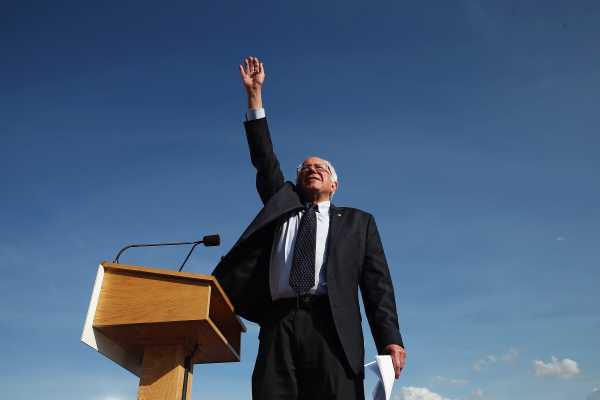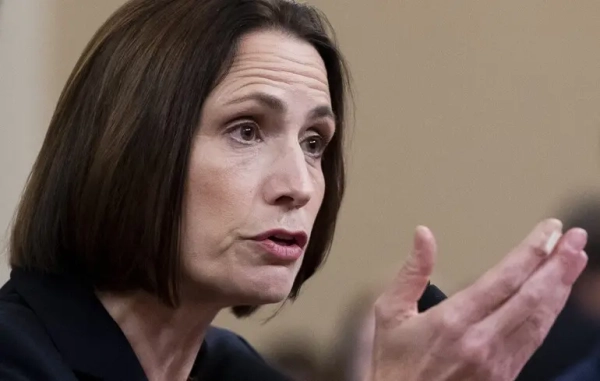
Sen. Bernie Sanders, the Vermont independent running for president, has spent decades building a reputation for his leftist advocacy on economic issues, health care, and higher education.
But his history as an independent voice unafraid of criticizing the Democratic Party from the left also made him an early critic of mass incarceration and punitive criminal justice policies — a position that made him stand out when both political parties were racing to look “tough on crime” in the 1990s, even if such criticisms are more in line with many Democrats’ beliefs today.
In 1991, Congress was debating a punitive crime bill that would have, among many other steps, widened the use of the death penalty and ramped up prison sentences. The final bill — a compromise after Democrats and Republicans went back and forth to see who could look tougher — was sponsored by Democrats, actually getting more votes from Democrats than Republicans in the House.
Sanders, then Vermont’s representative in the House, argued the bill was “not a crime prevention bill” but “a punishment bill, a retribution bill, a vengeance bill.” He criticized it for expanding the use of the death penalty as other developed nations were reeling it back or ending its use altogether. Then he focused on mass incarceration:
Sanders suggested that instead of focusing on locking up more people, the US should try to focus on “the root causes of crime.” He asked, “How do we stop crime, which is in fact a very, very serious problem in this country?”
He ultimately voted against the 1991 bill, which died in the Senate.
Sanders did vote for a major 1994 law, which President Bill Clinton strongly pushed for at the time, that also ramped up the use of prisons and lengthened prison sentences. But he still emphasized back then that he didn’t back the mass incarceration approach. He said:
Instead, Sanders said he voted for the 1994 law because he supported certain parts of it — such as the Violence Against Women Act, which helped crack down on domestic violence and rape. “I have a number of serious problems with the crime bill, but one part of it that I vigorously support is the Violence Against Women Act,” he said. “We urgently need the $1.8 billion in this bill to combat the epidemic of violence against women on the streets and in the homes of America.”
Criminal justice reformers may still fault Sanders for his vote for the 1994 law, arguing that the legislation still did more harm than good (although its effects have been exaggerated). But the criticisms of America’s heavy use of jail and prison were way ahead of the time — and indicate that Sanders was an early ally on this particular issue.
Sanders’s skepticism of mass incarceration was ahead of its time
At the time, Sanders was not just speaking out against conservative or Republican “tough on crime” priorities by criticizing mass incarceration. He was taking on Democrats, too, who during the 1980s, ’90s, and even the 2000s were trying to compete with the GOP to look as if they were just as “tough” on crime.
In fact, the 1994 crime law was one of Bill Clinton’s big legislative achievements at the time, something the then-president boasted about it in campaign ads. Joe Biden, who was then a senator, wrote parts of the 1994 law.
The drive to lock up more Americans had its roots in crime waves fueled by racial and economic disparities, the crack epidemic, distrust in government, and other factors. Those crime waves led to massive increases in crime that consumed the public’s attention. In the early 1990s, based on Gallup’s polling, crime was among Americans’ top concerns.
Criminal justice expert Mark Kleiman explained the national attitude at the time in a piece for Washington Monthly:
This led politicians on both sides of the aisle to seek “tougher” solutions — not just with the 1994 crime law, but all sorts of state and federal legislation that ramped up punishments for everything from stealing to drugs to murder.
But Sanders was a critic of this push. He voted against the 1991 crime bill, and criticized the 1994 law’s “tough” provisions. He voted against ending Pell Grants, which pay for higher education, for prisoners. He voted to amend the 1994 crime law to ban the federal death penalty. And he voted against the Anti-Terrorism and Effective Death Penalty Act of 1996, which restricted defendants and prisoners’ ability to contest court rulings — even when the rulings may be unconstitutional. (Although Sanders did in 1995 suggest that penalties for powder cocaine should be harsher to match penalties for crack cocaine, and boasted about supporting some “tough on crime” laws, particularly programs funding police, in 2006.)
Sanders’s comments in the 1990s indicate that a specific point of his skepticism was the heavy use of prison, which he suggested wouldn’t be very effective in fighting crime. The research has now proven that suggestion right.
Mass incarceration hasn’t worked
Years later, many studies have found that mass incarceration doesn’t really work.
A 2015 review of the research by the Brennan Center for Justice estimated that more incarceration — and its abilities to incapacitate or deter criminals — explained about 0 to 7 percent of the crime drop since the 1990s, though other researchers estimate it drove 10 to 25 percent of the crime drop since the ’90s.
Another huge review of the research, released in 2017 by David Roodman of the Open Philanthropy Project, found that releasing people from prison earlier doesn’t lead to more crime, and that holding people in prison longer may actually increase crime.
That conclusion matches what other researchers have found in this area. As the National Institute of Justice concluded in 2016, “Research has found evidence that prison can exacerbate, not reduce, recidivism. Prisons themselves may be schools for learning to commit crimes.”
The silver lining, if there is one, is laws like the 1994 crime measure turned out to not be very effective in perpetuating mass incarceration. That’s largely because most inmates — about 87 percent — are held in state prisons. And states were frequently ahead of the feds on enacting more punitive policies, so financial incentives for more incarceration (like those in the 1994 law) often came after states had already acted on their own.
That shows just how deep and widespread support for mass incarceration was at the time: Every single state ramped up its use of jail and prison in the 1980s and ’90s, but did so out of earnest support for the policy, not due to federal incentives.
But it also shows the limits of federal policy. Since mass incarceration mostly comes down to the local and state levels, it’s largely going to be left to local and state officials — not the president or other federal lawmakers — to undo it.
That limits what Sanders could do, as senator or president, to reverse mass incarceration. It means that past campaign promises that he could single-handedly undo mass incarceration — like when he said in 2016 that “at the end of my first term, we will not have more people in jail than any other country” — were oversold.
Still, having an early critic of mass incarceration in the White House would be a boon for criminal justice reformers. A constant worry in the criminal justice reform space is what would happen if, say, the crime rate started to rise once again. If that were to happen, there could be pressure on lawmakers — and it’d at least be easier for them — to go back to “tough on crime” views, framing more aggressive policing and higher incarceration rates in a favorable way.
Given that the central progressive claim is that these policies are racist and, based on the research, ineffective for fighting crime in the first place, any potential for backsliding in this area once it becomes politically convenient is very alarming.
Sanders’s record during a previous crime wave suggests that he would not, at the very least, use the bully pulpit of the presidency to call for more incarceration. That record sets him apart from some of his presidential primary opponents — like Sens. Amy Klobuchar (D-MN) and Kamala Harris (D-CA), who advocated for “tough on crime” approaches in the past as prosecutors. And it could add an extra layer of resistance to the lock-’em-up movement if crime did happen to rise under President Sanders.
Sourse: vox.com






